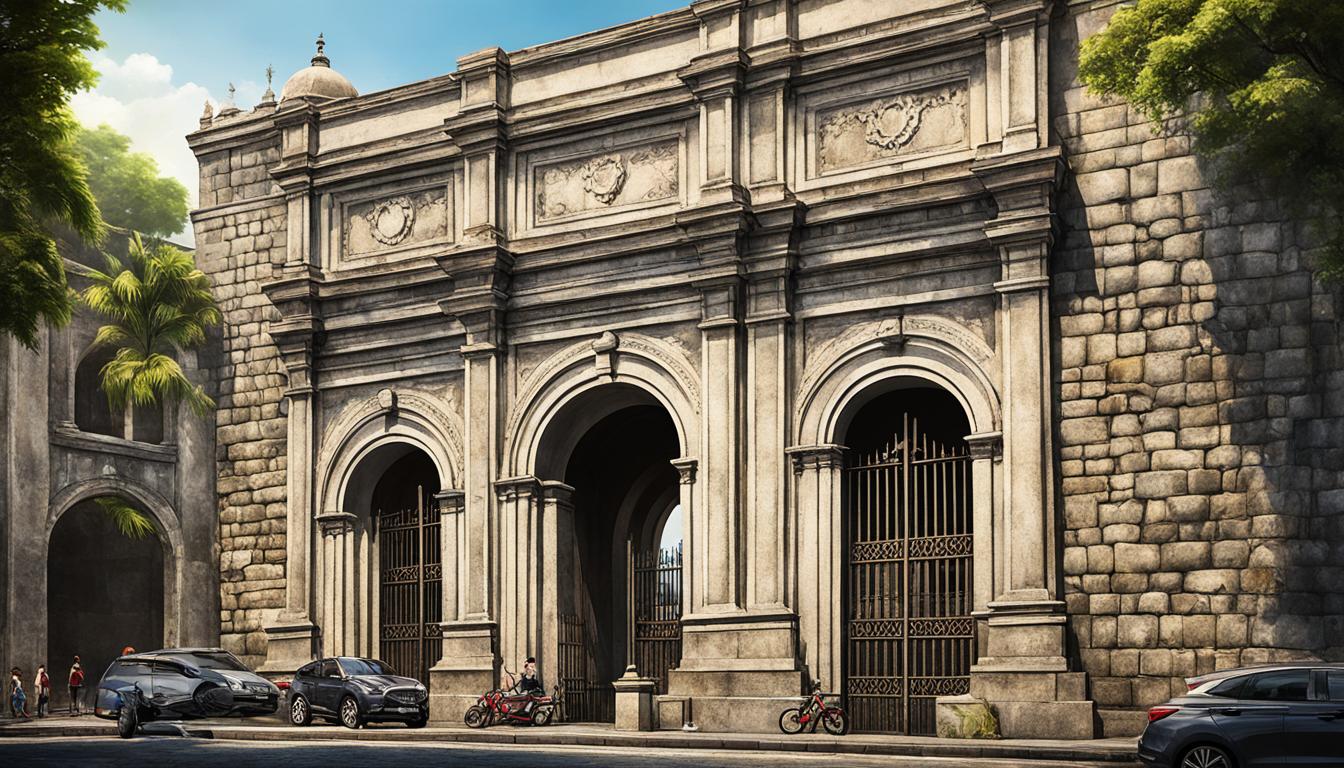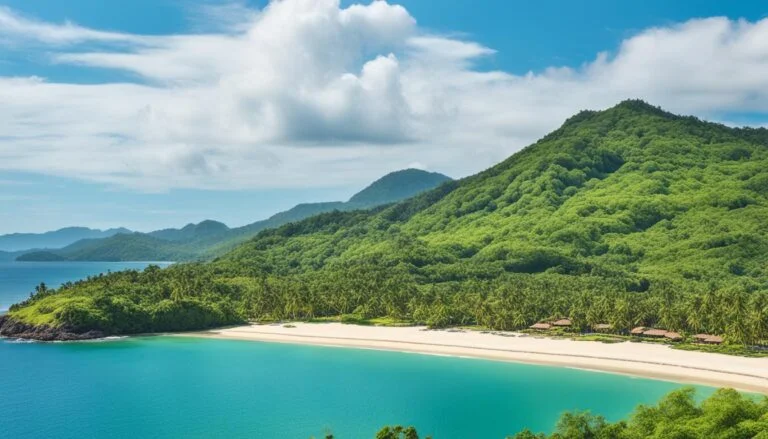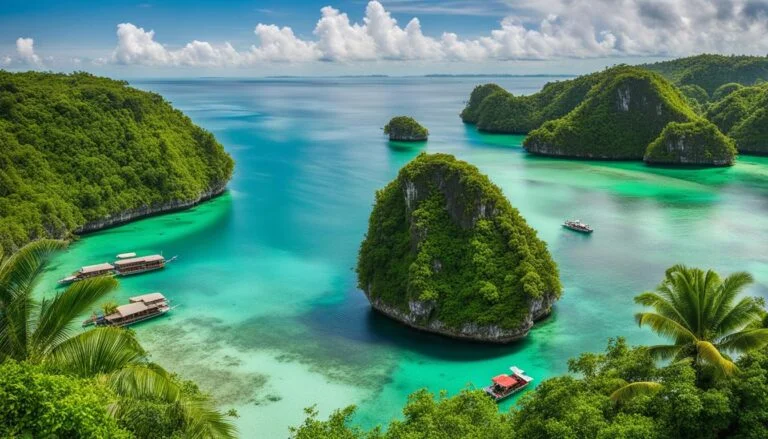Step Back in Time: Visit These Historical Sites in the Philippines!
Have you ever wondered what it would be like to explore the remnants of a bygone era, where the echoes of history still resonate? The Philippines, a tapestry of diverse cultures and captivating narratives, offers a treasure trove of historical sites that transport visitors into the heart of the country’s captivating past. From the walled city of Intramuros to the ancient Banaue Rice Terraces, these destinations invite you to uncover the nation’s soul and gain a deeper understanding of its remarkable journey1.
Key Takeaways
- Discover the grandeur of Spanish colonial architecture in the walled city of Intramuros, Manila.
- Marvel at the ancient engineering prowess behind the Banaue Rice Terraces, a UNESCO World Heritage Site.
- Explore Corregidor Island, a poignant reminder of the sacrifices made during World War II.
- Pay tribute to the nation’s heroes at Rizal Park, the site of Jose Rizal’s execution.
- Immerse yourself in the unique Hispano-Filipino culture of Vigan, another UNESCO-recognized destination.
These historical sites offer a window into the Philippines’ captivating past, each with its own compelling story to tell. Whether you’re a history buff, an architecture enthusiast, or simply someone seeking to connect with the soul of the nation, these destinations promise to leave an indelible mark on your journey. So, what are you waiting for? Embark on a voyage through time and explore the historical treasures that await in the Philippines23.
Intramuros: A Remnant of Spanish Colonial Grandeur
Nestled within the heart of Manila, the walled city of Intramuros stands as a testament to the Philippines’ Spanish colonial architecture and colonial landmarks4. This 420-year-old fortified enclave was once the center of political, military, and religious power during the Spanish era, its cobblestone streets and traditional establishments offering a glimpse into Manila history4.
Visitors to Intramuros can explore a wealth of well-preserved historical sites, including the magnificent Manila Cathedral, the Baroque-style San Agustin Church (one of the oldest churches in the country)5, and the iconic Fort Santiago, where national hero Jose Rizal was imprisoned before his execution4. The area also houses several museums, such as the Rizal Shrine, Bahay Tsinoy, and the Museo de Intramuros, providing deeper insights into the city’s rich heritage5.
Strolling through Intramuros is like stepping back in time, with the walled city offering a captivating blend of Spanish colonial architecture and colonial landmarks4. This UNESCO World Heritage Site is described as a “living history book,” revealing stories of a bygone era and the Filipinos’ struggle for freedom5. From the arched entrance of Fuerza de Santiago, a memorial to the heroes who fought for liberty, to the tranquil Fort Santiago park and the awe-inspiring San Agustin Church, Intramuros is a must-visit destination for history enthusiasts and culture lovers alike546.
Banaue Rice Terraces: Ancient Wonders of Engineering

Carved into the mountainsides of the Ifugao province over 2,000 years ago, the Banaue Rice Terraces are a breathtaking testament to the ingenuity and resilience of the indigenous people7. Often referred to as the “Eighth Wonder of the World,” these lush green terraces are a masterpiece of ancient agricultural engineering, providing sustenance and shaping the cultural identity of the Ifugao people8. Recognized as a UNESCO World Heritage site, the Banaue Rice Terraces stand as a captivating reminder of the harmonious relationship between humanity and nature, showcasing the remarkable achievements of the pre-colonial Filipinos.
Situated approximately 1,500 meters (4,900 feet) above sea level9, the Banaue Rice Terraces are located around 216 miles (348 kilometers) from Manila, taking 8 to 10 hours to reach by bus7. These ancient wonders of engineering have been cultivated for over 2,000 years89, demonstrating the enduring nature of this remarkable feat of human ingenuity. The terraces have been recognized as having a higher tourism value than rice production7, making them a vital source of income and cultural preservation for the Ifugao people.
Despite their significance, the Banaue Rice Terraces face challenges in modern times. Approximately 25 to 30 percent of the terraces are currently abandoned and deteriorating due to migration of young people to urban areas and the decline in traditional farming practices7. However, sustainable tourism is seen as a potential solution for the conservation of these ancient wonders7. With the Banaue Rice Terraces serving as a living reminder of the Ifugao’s rich cultural heritage, the preservation of this UNESCO World Heritage site remains crucial for future generations to experience and marvel at the remarkable engineering feats of the past.
Corregidor Island: A Poignant Reminder of World War II

Nestled at the entrance of Manila Bay, Corregidor Island holds a profound chapter in the Philippines’ history. During the tumultuous years of World War II, this tadpole-shaped island served as a crucial battleground, bearing witness to the unwavering courage and resilience of the Filipino people10. Today, its ruins and military installations, including gun batteries, barracks, and the impressive Malinta Tunnel complex, stand as a somber reminder of the sacrifices made in the face of adversity10.
In December 1941, the Japanese invasion of the Philippines began, and Corregidor Island became a temporary headquarters for the Philippine Government11. The island’s strategic location made it a prime target, and in May 1942, it was surrendered to the Japanese military forces11. However, the Filipino and American forces did not give up easily, and in February 1945, they successfully regained control of Corregidor Island, marking a significant milestone in the liberation of Manila11.
Visiting Corregidor Island today provides a unique opportunity to immerse oneself in the region’s military history10. Tourists can explore the island’s extensive network of tunnels, gun emplacements, and other historical sites, gaining a deeper understanding of the challenges faced by the Philippine resistance during the war12. The island also features the Malinta Tunnel, which now hosts a captivating light and sound show, bringing the past to life11.
Beyond its military significance, Corregidor Island is a habitat for various bird species, appealing to wildlife enthusiasts12. While the beaches on the island are more recognized for their historical importance than leisure purposes, the tranquil setting offers a chance to reflect on the sacrifices made by the Filipino people during the war12.
Corregidor Island stands as a poignant reminder of the Philippines’ resilience and the price of freedom. This island’s history serves as a powerful testament to the nation’s unwavering spirit in the face of adversity, making it a must-visit destination for those seeking to understand the country’s military past.101112
Historical sites in the Philippines: Windows to the Nation’s Soul
Across the Philippines, a tapestry of historical landmarks and sites stands as a testament to the country’s rich cultural heritage. From the verdant Rizal Park, honoring the nation’s revered national hero, to the well-preserved Spanish colonial town of Vigan and the iconic Magellan’s Cross in Cebu, these destinations offer a window into the Philippines’ captivating past13.
Each site holds a unique story, whether it’s the saga of the Philippine Revolution, the enduring colonial influence, or the unwavering spirit of the Filipino people. Exploring these historical places not only educates visitors but also instills a profound appreciation for the Philippines’ resilient and multifaceted identity, embodying the very soul of the nation14.
From the ancient Banaue Rice Terraces15 to the hallowed grounds of Corregidor Island, these historical landmarks serve as a testament to the ingenuity, tenacity, and cultural tapestry that define the Philippines. By immersing themselves in these sites, travelers can gain a deeper understanding of the country’s past and its enduring influence on the present15.







